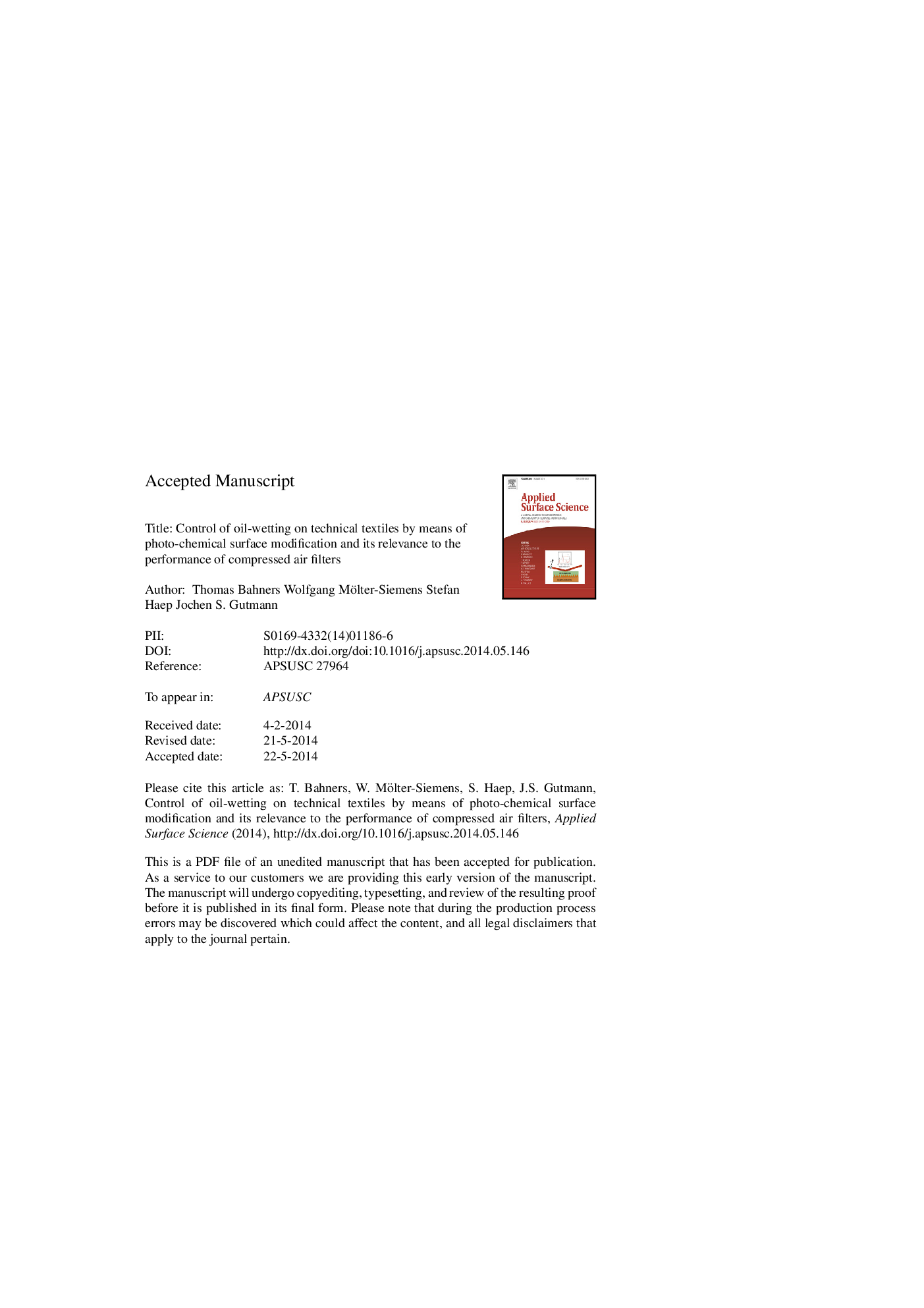| Article ID | Journal | Published Year | Pages | File Type |
|---|---|---|---|---|
| 5356324 | Applied Surface Science | 2014 | 37 Pages |
Abstract
A two-step process comprising a surface roughening step by excimer laser irradiation and a post-treatment by photo-grafting to decrease the surface free energy was employed to increase the oil repellence of technical fabrics made of poly(ethylene terephthalate) (PET). The modification was designed to improve the performance of multi-layer filters for compressed air filtration, in which the fabrics served to remove, i.e. drain, oil separated from the air stream. In detail, the fibers surfaces were roughened by applying several laser pulses at a wavelength of 248 nm and subsequently photo-grafted with 1H,1H,2H,2H-perfluoro-decyl acrylate (PPFDA). The oil wetting behavior was increased by the treatments from full wetting on the as-received fabrics to highly repellent with oil contact angles of (131 ± 7)°. On surfaces in the latter state, oil droplets did not spread or penetrate even after one day. The grafting of PPFDA alone without any surface roughening yielded an oil contact angle of (97 ± 11)°. However, the droplet completely penetrated the fabric over a period of one day. The drainage performance was characterized by recording the pressure drop over a two-layer model filter as a function of time. The results proved the potential of the treatment, which reduced the flow resistance after 1-h operation by approximately 25%.
Related Topics
Physical Sciences and Engineering
Chemistry
Physical and Theoretical Chemistry
Authors
Thomas Bahners, Wolfgang Mölter-Siemens, Stefan Haep, Jochen S. Gutmann,
